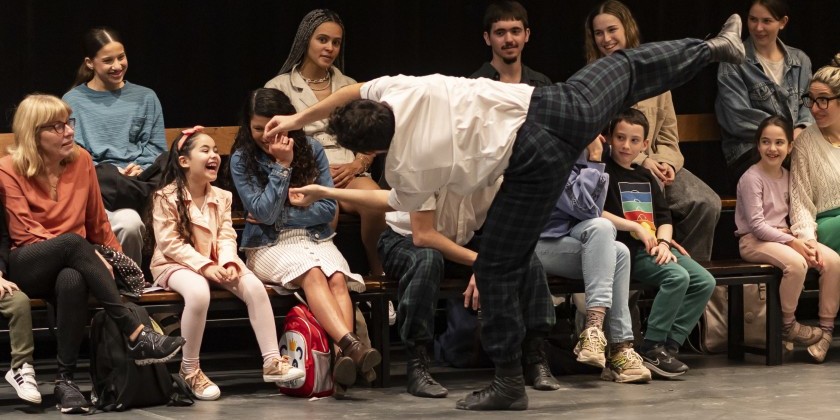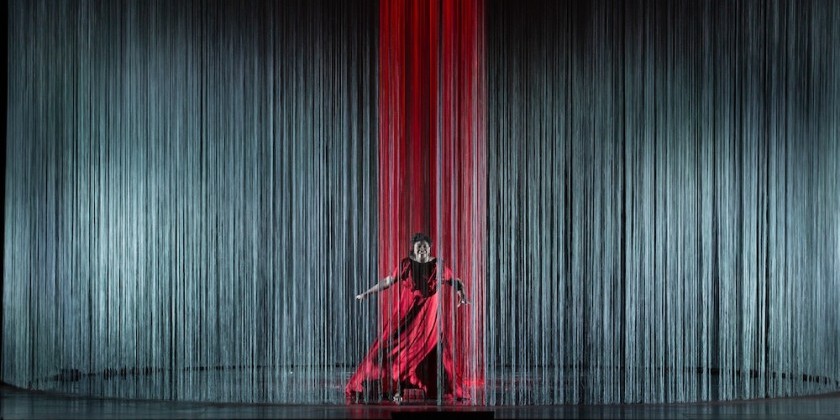Impressions of: Batsheva Dance Company’s “Last Dance” at BAM

BAM Opera House
February 1, 2017
Choreographer: Ohad Naharin
Composer: Grischa Lichtenberger
Stage design by Zohar Shoef
Costume design by Eri Nakamura
Ohad Naharin comes from Israel, that country fighting for its daily breath on the desert by the sea. His dancers have the stoicism of soldiers trained to patrol, if not embody, the borders of a no man’s zone, a Twilight Zone. Judging from his Last Dance as performed by Batsheva Dance Company to a packed BAM Opera House, his choreography mirrors the emotional weather of our times, desperate and lonely.
Throughout Last Dance, one woman jogs on an treadmill upstage, providing a visual ostinato, a counterpoint to the surreal explorations of the other dancers. A man crawls stealthily across stage on his tip toes, as though dodging a searchlight. Another man beats his right knee in semi- circle while keeping his left leg nailed to the floor and slowly undulating his arms. A woman arches to the floor and flirts with gravity -- nearly, but never, kissing the floor with her shoulders.

The Batsheva Dance Company in Ohad Naharin's Last Work; Photo: Julieta Cervantes
The Batsheva Company members have the flexibility of Cirque du Soleil gymnasts with the internal focus of Butoh dancers. Compared with the earlier incorporations of Naharin’s Gaga technique, which could charm through small, awkward gestures and glimpses of vulnerability, the company now appears outlandish and self-absorbed, challenging the viewer to consider their own passivity. The sixty-five minute work largely presents solos and duets, as brilliant as lightning, harrowing in the individual isolation of the dancers.
Midway in Last Dance, the dancers, in a line upstage, change costumes, shedding black for white. One dancer waves a white flag while another, his back to the audience, frantically rubs something, one assumes his privates, until he turns towards us, revealing the object of his polish is a gun.
Towards the close, the dancers finally come together, moving in a circle, facing the audience, bound, literally, by tape. The thought at the finish is as banal as the jogger — where did they find tape that could be stretched around all the dancers without breaking off its roll?

Front (r-l): Bret Easterling and Zina Zinchenco; Back (r-l) Or Meir Schraiber, Matan Cohen and Yoni Simon in Ohad Naharin's Last Work. Photo: Julieta Cervantes
Naharin said in an interview with writer/dancer Wendy Perron in 2014, “Gaga is a toolbox that can help dancers go beyond their limits on a daily basis."
But, when the dancers’ limits are beyond the audience’s experience, the effect can be alternately alienating and even threatening, a dark foreboding of what is to come.
The Dance Enthusiast Shares IMPRESSIONS/ our brand of review and Creates Conversation.












